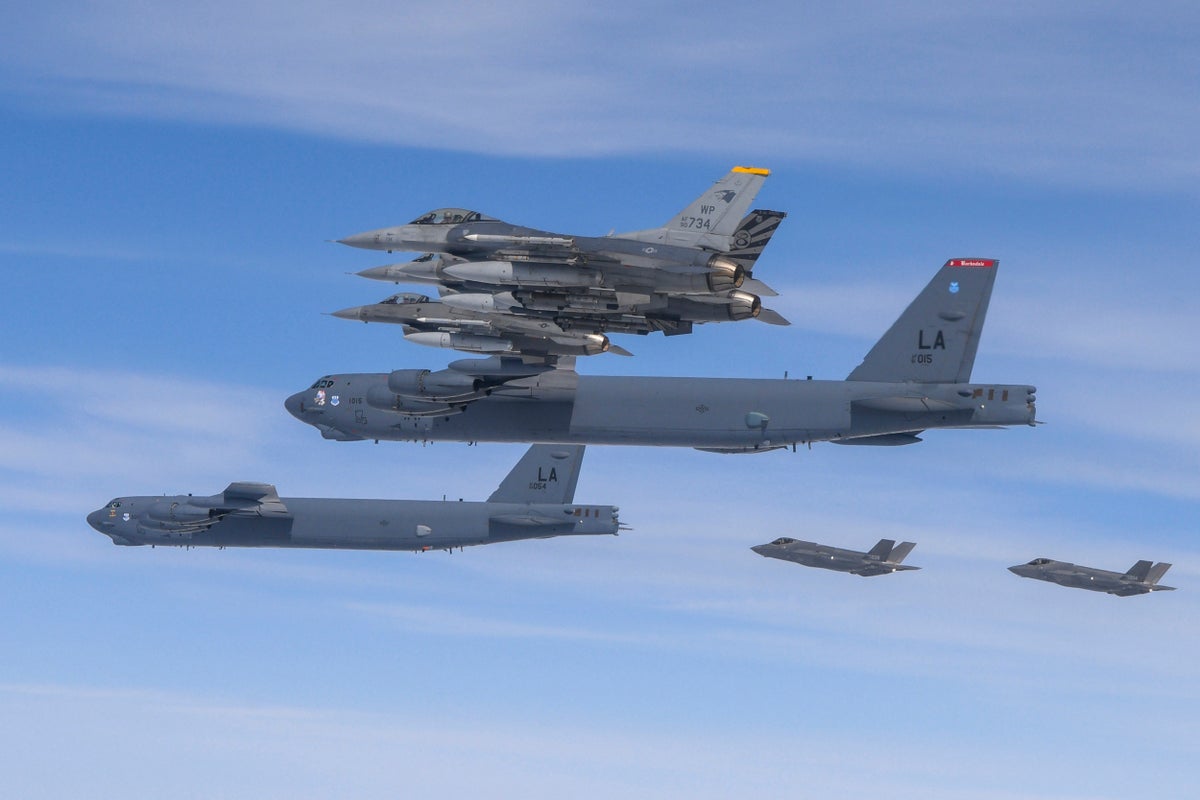
South Korea scrambled fighter jets on Thursday after at least six Chinese and Russian warplanes were seen enterering its air defence zone, the country’s Joint Chiefs of Staff (JCS) said.
Two Chinese and four Russian jets entered South Korea’s Air Defense Identification Zone (KADIZ) off its east coast on Thursday afternoon, beginning at 11.53am (2.53am GMT) and exiting by 12.10pm, the military said.
The JCS said the planes were detected before they entered the KADIZ and it mobilised the air force’s fighter jets in response, according to the Yonhap news agency.
The planes did not violate South Korea’s territorial airspace, the military said.
It is not the first time that Russian and Chinese planes have jointly entered South Korea’s air defence zone. Similar flights in 2019 led to a significant escalation of tensions with South Korean jets firing hundreds of warning shots towards the Russian and Chinese jets conducting joint exercises.
According to the International Civil Aviation Organisation, an ADIZ is typically an area where countries can unilaterally require foreign aircraft to take specific measures to identify themselves.
There are no international laws that gover these air defence zones, unlike a country’s official airspace, which is the space above its territory and extends 12 nautical miles away from its coastline.
Russia does not recognise Korea’s air defence zone, while China says all countries should enjoy freedom of movement there given it is not territorial airspace.
In June this year, South Korea said four Russian and four Chinese planes entered its air defence zone without any notice and it “deployed air force fighters to conduct tactical steps in preparation against potential accidental situations”.
China and Russia have previously stated that their military aircraft were engaged in routine joint exercises.
On 30 November 2022, two Chinese H-6 bombers and six Russian warplanes, including TU-95 bombers and SU-35 fighter jets, repeatedly entered South Korea’s air defence zone, following similar manoeuvres in May 2022 and August 2022.
In 2019, the situation escalated when South Korean warplanes fired hundreds of warning shots towards Russian jets after they entered the KADIZ during a joint patrol with China.
Russia’s government at the time accused two South Korean F-16 fighter planes of carrying out “unprofessional manoeuvres” by crossing the path of Russian bombers.
“It was not for the first time that South Korean pilots tried unsuccessfully to prevent Russian aircraft from flying over the neutral waters of the Sea of Japan,” the ministry said.







